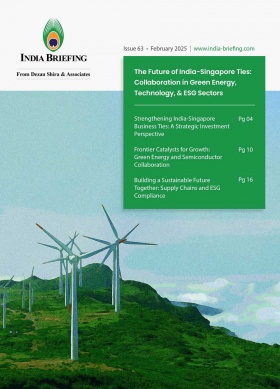100 Days of Trump 2.0: India’s Tariff and Trade Navigations So Far
India is proactively seeking tariff concessions and a bilateral trade pact with the United States in response to escalating global trade tensions arising from the Trump administration’s updated tariff regime. We examine Donald Trump’s second term as the US president and its influence on trade negotiations with India.
India is pursuing a diplomatic and strategic approach to safeguard its trade interests amid rising global trade tensions stemming from the US’s revised tariff policies. In the latest media interaction held on May 4, 2025, US President Donald J. Trump indicated the possibility of finalizing new trade agreements in the coming weeks of May, potentially offering relief to countries seeking exemptions from elevated US import duties. While he did not name specific countries, he reiterated that the US would unilaterally determine the terms of any prospective agreements.
India, along with other Asian countries such as South Korea and Japan, remains actively engaged in formal negotiations to secure waivers from the stringent tariffs, several of which, including a 10 percent base duty and additional levies on steel, aluminum, and automotive components, continue to be enforced.
India proposes tariff relief on select US goods amid trade talks
As of May 6, 2025, India has reportedly offered to reduce tariffs on selected US products, such as steel, automotive components, and pharmaceuticals, within a specific import quota. According to media reports, the proposal is part of India’s broader objective to conclude a bilateral trade agreement with the United States by the fall.
This offer comes in the wake of intensifying global trade tensions, triggered on April 2, 2025, when Trump announced a revised tariff framework. The new structure introduced a flat 10 percent base tariff and country-specific reciprocal tariffs, with Indian exports facing duties as high as 26 percent.
On April 9, Trump temporarily suspended the implementation of these tariffs, stating the need to fast-track trade negotiations with key partners, including India.
In response, a delegation of Indian trade officials traveled to Washington in late April to advance negotiations with their US counterparts. As per the reports, during the visit, the Indian officials proposed the zero-tariff arrangement, which would apply only to a pre-determined volume of imports. Any imports exceeding that limit would be subject to India’s standard tariff rates.
Tracking trade developments in the first 100 days of Trump 2.0
- Day 1 (Jan 20, 2025): Donald Trump is sworn in as the 47th President of the United States. India’s Prime Minister Narendra Modi extends congratulations and expresses a desire to strengthen India-US relations.
- Day 7 (Jan 27, 2025): India announces that Modi and Trump reaffirmed their commitment to a trusted and mutually beneficial partnership in a telephonic conversation. They discussed cooperation in technology, trade, investment, energy, and defense. On the same day, Trump announced a 25 percent reciprocal tariff on goods from Colombia.
- Day 13 (Feb 1, 2025): Trump imposes sweeping tariffs on imports from Mexico, Canada, and China through a series of executive orders.
- Day 15: Trump delays the implementation of tariffs on these three countries by one month.
- Day 25 (Feb 13, 2025): Prime Minister Modi meets President Trump at the White House. On the same day, Trump announces the “Fair and Reciprocal Plan,” which calls for imposing reciprocal tariffs on all US trading partners.
- Day 45 (Mar 5, 2025): After implementing 25 percent tariffs on goods from Mexico, China, and Canada, the US government grants exemptions for car manufacturers.
- Day 46: Further delays are announced till April for the implementation of tariffs on the three nations, pushing higher duties.
- Day 49: Trump declines to rule out the possibility of a recession or rising inflation due to ongoing uncertainty over his tariff policy.
- Day 52 (Mar 12, 2025): Tariffs of 25 percent on imported steel and aluminum come into effect, impacting nearly all countries exporting these materials to the US. The move draws immediate threats of retaliation from the European Union (EU) and other trade partners. On March 11, India issued a statement reaffirming its commitment to fair trade and announced measures to protect its domestic steel industry. This includes anti-dumping and countervailing duties on imports from countries like China, South Korea, and Vietnam.
- Day 53: Trump threatens further escalation with the EU, posting on social media about the potential imposition of a 200 percent tariff on European wine and champagne.
- Day 66 (March 26, 2025): The Trump administration announces 25 percent tariffs on cars imported by the US from overseas.
- Day 69 (March 29, 2025): The Union Ministry of Commerce and Industry releases a statement saying officials from India’s Department of Commerce and the US Trade Representative’s office met in New Delhi from March 26–29, 2025. The talks focused on shaping the first phase of a comprehensive Bilateral Trade Agreement (BTA), targeted for conclusion by fall 2025.
- Day 73 (April 2, 2025): Marking the occasion as “Liberation Day,” Trump unveils new tariffs on its trading partners, triggering a global trade tension. He announced that the US would impose a baseline 10 percent rate on all imports starting 5 April, as well as much higher “reciprocal” rates for dozens of countries that would come into effect on 9 April.
CLICK HERE TO READ: US Hikes Tariff on Indian Imports to 26%: All You Need to Know
- Day 74 and 75: Financial markets across the globe register a downfall after the US’s tariff imposition announcement.
- Day 78: The EU said it offered a “zero-for-zero” tariff deal on certain goods, including cars, before Trump kicked off the trade war.
- Day 80 (April 9, 2025): Trump announces a 90-day halt on country-specific tariffs; however, the base tariff of 10 percent continues. While India dodges the reciprocal tariffs temporarily, Trump imposes 125 percent duty rates on goods imported from China in the US.
CLICK HERE TO READ: US Halts 26% Tariffs on Indian Goods for 90 Days
- Day 81: The Trump administration raises reciprocal tariffs against China to 145 percent.
- Day 82 (April 11, 2025): India’s Directorate General of Foreign Trade (DGFT) launches a Global Tariff and Trade Helpdesk to address concerns such as import/export hurdles, dumping, EXIM clearances, logistics, compliance, and financial issues.
- Day 83: The US administration says smartphones, computers, and other electronics would be exempted from the huge tariffs imposed on global trading partners.
- Day 84: Trump’s commerce secretary, Howard Lutnick, clarifies that the US’s tariff exemption on several electronic devices was just temporary. He said that new duties would come in “a month or two,” and semiconductors would see new tariffs as well.
- Day 100 (April 29, 2025): As per the central government, India and the US have made “positive progress” in the latest round of discussions held in Washington, D.C., on the proposed Bilateral Trade Agreement (BTA). The announcement further states that representatives from both sides explored a roadmap for concluding the first tranche of a “mutually beneficial, multi-sector” trade agreement by Fall 2025.
In a media interview with Fox News on May 1, US Vice President J.D. Vance signaled that the US is determined to “rebalance” trade relationships, with India poised to be among the first nations to clinch a deal that could halt the looming threat of reciprocal tariffs.
Surge in trade activity between India and the US
Multiple media reports indicate that Indian exporters significantly accelerated shipments to the US in March 2025, aiming to avoid the reciprocal tariffs that were set to take effect on April 2. Although the US federal government subsequently delayed the implementation of the tariff by 90 days, exporters around the world, including major firms like Apple, rushed to dispatch last-minute consignments before the duties were enforced.
According to data released by the Union Ministry of Commerce and Industry on April 16, 2025, goods worth over US$10 billion were exported from India to the US, reflecting a sharp 35 percent increase compared to March 2024.
Official data shows that India’s exports to the US rose to US$10.14 billion in March 2025, up from US$7.51 billion in March 2024. India’s imports from the US also grew, reaching US$3.70 billion—an increase of 9.63 percent year-on-year. For the full fiscal year FY 2024–25, India’s imports from the US climbed 7.44 percent to US$45.53 billion, compared to US$42.13 billion in FY 2023–24.
Conclusion
India’s engagement with the US amid Trump’s protectionist trade agenda highlights a strategic recalibration of its external economic policy to mitigate tariff shocks and preserve export competitiveness. The accelerated negotiations, targeted tariff relief proposals, and sharp surge in bilateral trade flows reflect India’s intent to secure early concessions while positioning itself as a constructive and indispensable trade partner. As talks advance toward a potential bilateral trade agreement, India’s calibrated diplomacy may serve as a model for navigating uncertainty in an increasingly unilateral global trade environment.
About Us
India Briefing is one of five regional publications under the Asia Briefing brand. It is supported by Dezan Shira & Associates, a pan-Asia, multi-disciplinary professional services firm that assists foreign investors throughout Asia, including through offices in Delhi, Mumbai, and Bengaluru in India. Dezan Shira & Associates also maintains offices or has alliance partners assisting foreign investors in China, Hong Kong SAR, Vietnam, Indonesia, Singapore, Malaysia, Mongolia, Dubai (UAE), Japan, South Korea, Nepal, The Philippines, Sri Lanka, Thailand, Italy, Germany, Bangladesh, Australia, United States, and United Kingdom and Ireland.
For a complimentary subscription to India Briefing’s content products, please click here. For support with establishing a business in India or for assistance in analyzing and entering markets, please contact the firm at india@dezshira.com or visit our website at www.dezshira.com.
- Previous Article India’s Pet Care Economy 2025: Market Trends, Key Players, and Growth Opportunities
- Next Article 特朗普执政百日2.0:至今印度关税与贸易的应对之道








